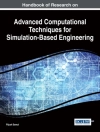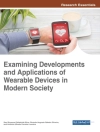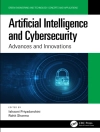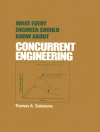- Reviews the latest research on the advances in IPM strategies for insect and disease control in horticultural crops
- Highlights the challenges of using alternative methods of control successfully in IPM programmes (e.g. biopesticides, bioprotectants, biostimulants)
- Provides examples of the practical implementation of IPM strategies to an array of horticultural crops (cucurbits, tomatoes, potatoes, cabbage, cauliflower) in differing environments (greenhouses, protected cultivation)
Inhoudsopgave
Part 1 Using biological agents in integrated pest management
1.Advances in biopesticides for insect control in horticulture: Travis R. Glare, Bio-Protection Research Centre, Lincoln University, New Zealand; and Aimee C. Mc Kinnon, La Trobe University, Australia;
2.Advances in bioprotectants for plant disease control in horticulture: Philippe C. Nicot, Thomas Pressecq and Marc Bardin, INRAE, Pathologie Végétale, France;
3.Advances in biostimulants as an IPM tool in horticulture: Surendra K. Dara, University of California Cooperative Extension, USA;
4.Improving application systems for bioprotectants in integrated pest management (IPM) programmes in horticulture: Clare Butler Ellis, Silsoe Spray Applications Unit Ltd, UK;
Part 2 Using decision support systems in integrated pest management
5.Advances in insect pest and disease monitoring and forecasting in horticulture: Irene Vänninen, Natural Resources Institute Finland (LUKE), Finland;
6.Advances in proximal sensors to detect crop health status in horticultural crops: Catello Pane, CREA – Research Centre for Vegetable and Ornamental Crops, Italy;
7.Advances in decision support systems (DSSs) for integrated pest management in horticultural crops: Mark W. Ramsden, ADAS, UK; and Aoife O’Driscoll, NIAB, UK;
Part 3 Improving integrated pest management techniques and implementation
8.The use of agronomic practices in integrated pest management programmes in horticulture: Aude Alaphilippe, Claude Bussi, Marion Casagrande, Tarek Dardouri and Sylvaine Simon, INRAE UERI Gotheron, France; Pierre-Eric Lauri, INRAE UMR ABSys, France; Amélie Lefèvre, INRAE Agroecological Vegetable Systems Experimental Facility, France; and Mireille Navarrete, INRAE UR Ecodeveloppement, France;
9.Advancing conservation biological control as a component of integrated pest management of horticultural crops: Robbie D. Girling, Tom D. Breeze and Michael P. Garratt, University of Reading, UK;
10.Assessing the economics of integrated pest management for horticultural crops: Philip R. Crain and David W. Onstad, Corteva Agriscience, USA;
11.Encouraging integrated pest management uptake in horticultural crop production: Norma R. Samuel, Associate District Extension Director and Urban Horticulture Extension Agent, Institute of Food and Agricultural Sciences, University of Florida, USA; and Oscar E. Liburd, University of Florida-Gainesville, USA;
Part 4 Case studies
12.Practical application of integrated pest management in greenhouses and protected cultivation: Bruno Gobin, Els Pauwels and Joachim Audenaert, PCS-Ornamental Plant Research, Belgium;
13.Practical applications of integrated pest management in horticultural cultivation: the cases of protected tomato and outdoor Brassica production: Richard H. Binks, Fresh Tec Agricultural Consultancy Limited, UK;
14.Practical application of integrated pest management to control cabbage root fly in vegetables: Louis Lippens, PCG vzw – Vegetable Research Centre Kruishoutem, Belgium; Sander Fleerakkers, PSKW vzw – Research Station for Vegetable Production Sint-Katelijne-Waver, Belgium; Femke Temmerman, Inagro vzw, Belgium; and Annelies De Roissart, HOGENT University of Applied Sciences & Arts, Belgium;
Over de auteur
Dr Robbie Girling is an Associate Professor in Agroecology and Sustainable Agriculture and the Head of Department of Sustainable Land Management at the University of Reading. His research focuses on investigations into the ecology of insects found in both agricultural and forestry ecosystems and my specific areas of expertise are in plant-insect interactions, and insect behavioural and chemical ecology.












